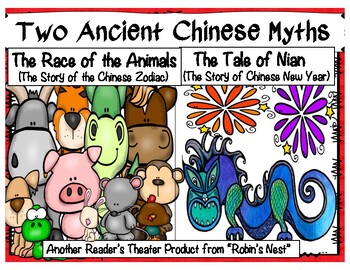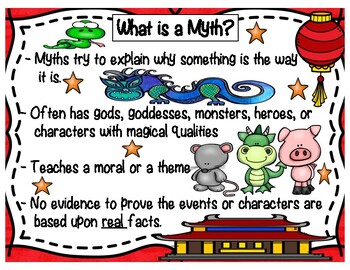Two Ancient Chinese New Years Myths: The Race of the Animals & The Tale of Nian
- PDF
Description
Are you ready to teach your students all about Chinese New Year? These two wonderful Reader's Theaters will help the children in your class to understand the myth behind the traditions of the New Year, as well as the animals and their position on the Chinese Zodiac calendar. The Race of the Animals and The Tale of Nian are written in kid friendly language and will help you to integrate social studies with both language arts and reading. Your students will practice and develop both their fluency and expression while reading high interest myths presented in a Reader's Theater format. Ample parts in each play guarantee that each child in your class will be able to participate in at least one of the plays. Also included with this product are the following:
- Color Anchor Charts (What is a Myth?, a poster of the Chinese Zodiac,
- posters of each animal, as well as descriptions of personality traits
associated with each
-posters of the Five Elements of Chinese philosophy, as well as how these
elements correlate with the animals on the calendar.
- Higher level vocabulary words written on cards to post in a pocket chart or
on your classroom wall
- Fun and enriching vocabulary activities and worksheets for each play!
Number of Parts in Each Play:
The Race of the Animals: 18 parts
The Tale of Nian: 11 parts
These two Reader's Theaters will truly help to enrich any unit on Chinese New Year!





